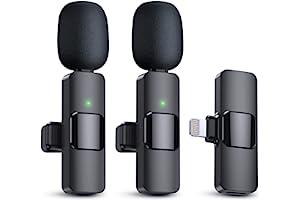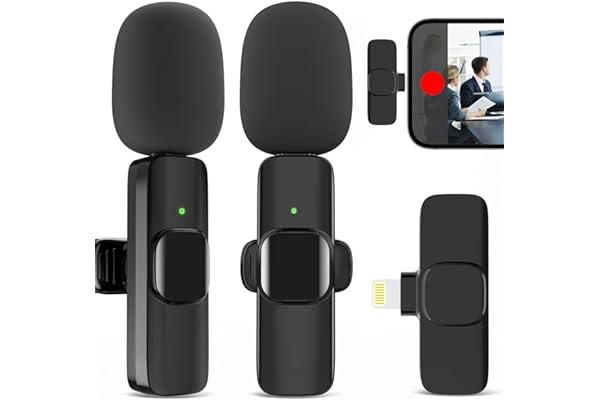Best Selling Wireless Lavalier Microphones & Systems
Introduction
Wireless lavalier microphones, also known as lapel microphones, are small, clip-on microphones that are worn on the body. They are often used in broadcast journalism, podcasting, and video production. Wireless lavalier microphones offer a number of advantages over traditional wired microphones, including:
- Freedom of movement: Wireless lavalier microphones allow the speaker to move around freely without being tethered to a microphone stand or cable.
- Reduced visibility: Wireless lavalier microphones are small and discreet, making them less visible to the audience.
- Improved sound quality: Wireless lavalier microphones can provide better sound quality than traditional wired microphones, as they are less prone to feedback and interference.
Links to Best Selling Wireless Lavalier Microphones & Systems
- MAYBESTA Professional Wireless Lavalier Lapel Microphone for iPhone, iPad - Cordless Omnidirectional Condenser Recording Mic for Interview Video Podcast Vlog YouTube (paid link)
- PQRQP 2 Pack Wireless Lavalier Microphones for iPhone, iPad - Crystal Clear Sound Quality for Recording, Live Streaming, YouTube, Facebook, TikTok (paid link)
- JUDKIOM 2 Pack Wireless Microphones for iPhone iPad, Professional Mics for Video Recording Interview Conference Podcast Vlog YouTube TikTok (paid link)
How Do Wireless Lavalier Microphones Work?
Wireless lavalier microphones consist of two main components: a transmitter and a receiver. The transmitter is a small, battery-powered device that clips onto the speaker's clothing. The transmitter converts the speaker's voice into an electrical signal and then transmits it wirelessly to the receiver. The receiver is a larger device that is typically placed on a table or stand. The receiver receives the electrical signal from the transmitter and converts it back into an audio signal, which is then sent to a speaker or recording device.
Types of Wireless Lavalier Microphones
There are two main types of wireless lavalier microphones: analog and digital. Analog wireless lavalier microphones use a traditional analog signal to transmit the speaker's voice. Digital wireless lavalier microphones use a digital signal to transmit the speaker's voice. Digital wireless lavalier microphones offer a number of advantages over analog wireless lavalier microphones, including:
- Improved sound quality: Digital wireless lavalier microphones can provide better sound quality than analog wireless lavalier microphones, as they are less prone to interference and distortion.
- Longer range: Digital wireless lavalier microphones can typically transmit the speaker's voice over a longer distance than analog wireless lavalier microphones.
- More secure transmission: Digital wireless lavalier microphones use encryption to protect the speaker's voice from eavesdropping.
Choosing the Right Wireless Lavalier Microphone
When choosing a wireless lavalier microphone, there are a number of factors to consider, including:
- The intended use: What will you be using the wireless lavalier microphone for? If you will be using it for broadcast journalism, you will need a microphone that is durable and can withstand the rigors of field reporting. If you will be using it for podcasting, you may be able to get away with a less expensive microphone.
- The environment: Where will you be using the wireless lavalier microphone? If you will be using it in a noisy environment, you will need a microphone that has good noise cancellation. If you will be using it in a quiet environment, you may be able to get away with a less expensive microphone.
- The budget: How much money do you have to spend on a wireless lavalier microphone? Wireless lavalier microphones can range in price from a few hundred dollars to several thousand dollars. It is important to set a budget before you start shopping so that you can narrow down your options.
Conclusion
Wireless lavalier microphones are a versatile and convenient way to capture audio for a variety of applications. When choosing a wireless lavalier microphone, it is important to consider the intended use, the environment, and the budget. With careful consideration, you can choose a wireless lavalier microphone that will meet your needs and provide you with excellent sound quality.


